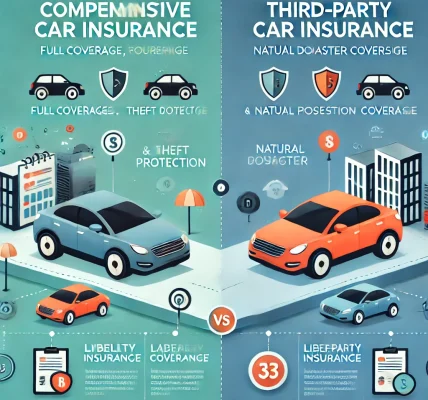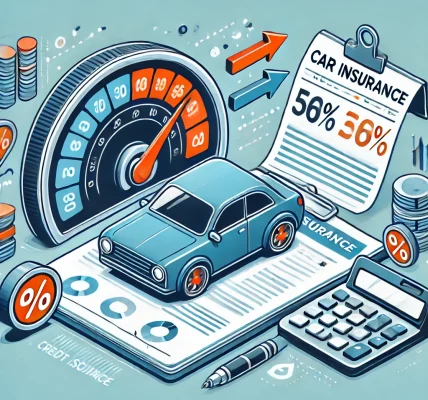Introduction
Car insurance premiums can often feel like a mystery. Many drivers wonder why their rates are higher or lower than others and what factors influence the final cost. Understanding how car insurance premiums are calculated can help you make informed decisions, save money, and choose the best coverage for your needs.
This comprehensive guide will break down the key elements that insurers consider when determining car insurance premiums. By the end of this article, you will have a clear understanding of what affects your insurance costs and how you can potentially lower them.
Key Factors That Affect Car Insurance Premiums
1. Your Driving Record
Your driving history is one of the most significant factors in determining your premium. Insurance companies assess:
- The number of accidents you’ve been involved in
- Traffic violations, such as speeding tickets or reckless driving
- Claims history (how often you have filed claims in the past)
Tip: Maintaining a clean driving record with no accidents or violations can help you qualify for lower premiums.
2. Vehicle Type and Model
The make, model, and year of your vehicle significantly impact your insurance cost. Insurers consider:
- The car’s value: Expensive cars generally have higher premiums due to costly repairs or replacement.
- Safety features: Cars with advanced safety features may qualify for discounts.
- Theft rate: Certain models are more prone to theft, increasing the insurance cost.
Tip: Opting for a car with strong safety ratings and a lower theft risk can help reduce your premium.
3. Your Location
Where you live and park your car affects your insurance rate. Insurers evaluate:
- Urban vs. rural areas: Cities typically have higher rates due to increased traffic and theft risks.
- Crime rates: Areas with higher crime rates lead to higher premiums.
- Weather risks: Locations prone to natural disasters (hurricanes, floods, etc.) may have higher insurance costs.
Tip: If you move to a safer neighborhood, inform your insurer, as it could lower your premium.
4. Your Age and Experience
Younger and inexperienced drivers generally pay higher premiums because they are statistically more likely to be involved in accidents. Factors include:
- Age: Drivers under 25 usually face higher rates.
- Experience: New drivers have less experience, leading to higher premiums.
Tip: If you’re a young driver, consider enrolling in a defensive driving course to reduce your premium.
5. Coverage Type and Limits
The type and level of coverage you choose directly impact your premium. The key coverage types include:
- Liability Insurance: Covers damages to other people and their property. Required by law in most places.
- Collision Coverage: Covers repairs to your car after an accident.
- Comprehensive Coverage: Covers non-collision incidents like theft, vandalism, and natural disasters.
- Personal Injury Protection (PIP): Covers medical expenses for you and your passengers.
Tip: While it may be tempting to choose the cheapest coverage, ensure you have enough protection for your financial security.
6. Deductibles
A deductible is the amount you pay out of pocket before your insurance kicks in. Choosing a higher deductible usually results in lower premiums, but it means you’ll have to pay more if you file a claim.
Tip: If you have a strong emergency fund, opting for a higher deductible can save you money on premiums.
7. Annual Mileage
The more you drive, the higher your risk of accidents, which can increase your insurance costs. Insurers typically offer lower rates to:
- Low-mileage drivers
- Those who use public transport or carpool frequently
Tip: If you drive less than the average person, ask your insurer about mileage-based discounts.
8. Credit Score (In Some Regions)
In many countries, insurance companies use credit scores to predict a driver’s likelihood of filing a claim. A higher credit score often leads to lower premiums.
Tip: Improving your credit score by paying bills on time and reducing debt can positively impact your insurance rates.
9. Marital Status
Married drivers often receive lower rates compared to single drivers. Studies suggest that married individuals tend to have fewer accidents.
Tip: If you recently got married, notify your insurer as you may qualify for a discount.
10. Insurance History
A continuous insurance history without gaps in coverage signals to insurers that you are a responsible driver. A lapse in coverage can result in higher premiums when you purchase a new policy.
Tip: If you’re switching insurers, ensure there is no lapse between your old and new policy.
How to Lower Your Car Insurance Premiums
Now that you understand how insurers calculate premiums, here are some effective ways to reduce your costs:
- Maintain a Clean Driving Record: Avoid accidents and traffic violations to qualify for discounts.
- Increase Your Deductible: A higher deductible leads to lower monthly premiums.
- Bundle Policies: Combining your car insurance with home or life insurance can result in discounts.
- Take Advantage of Discounts: Many insurers offer discounts for:
- Safe drivers
- Low-mileage drivers
- Anti-theft devices
- Defensive driving courses
- Compare Quotes from Multiple Insurers: Different insurers offer varying rates, so shop around before committing to a policy.
- Improve Your Credit Score: In regions where credit score affects insurance, better credit can lower your premium.
- Use Telematics or Usage-Based Insurance: Some insurers offer discounts based on real-time driving data collected through a mobile app or device.
Conclusion
Understanding how car insurance premiums are calculated empowers you to make better financial decisions. Factors such as your driving record, vehicle type, location, and coverage options all play a role in determining your premium. By implementing smart strategies like maintaining a clean driving record, choosing the right coverage, and seeking discounts, you can effectively lower your car insurance costs without compromising protection.
Before purchasing or renewing your car insurance, take the time to compare different policies and ensure you are getting the best possible deal. Knowledge is key to securing affordable and reliable coverage.



